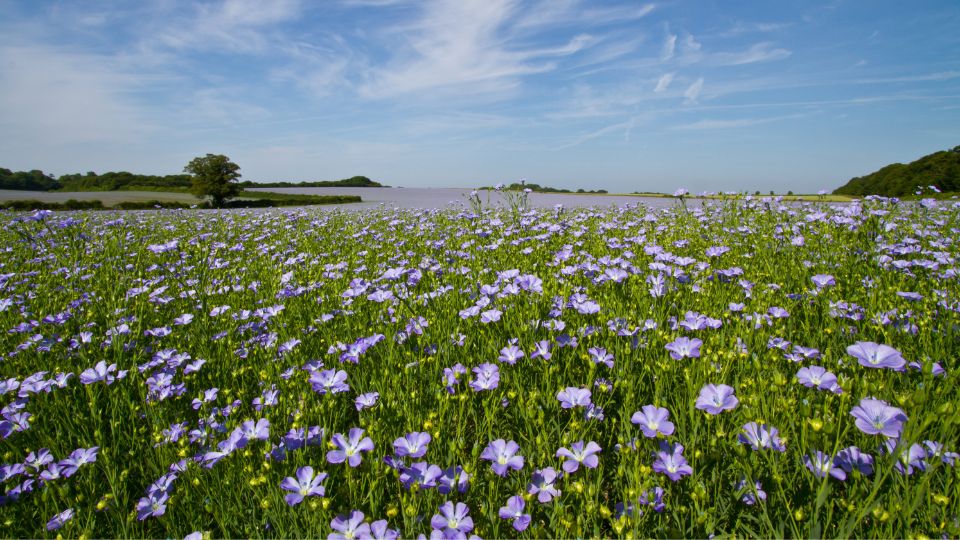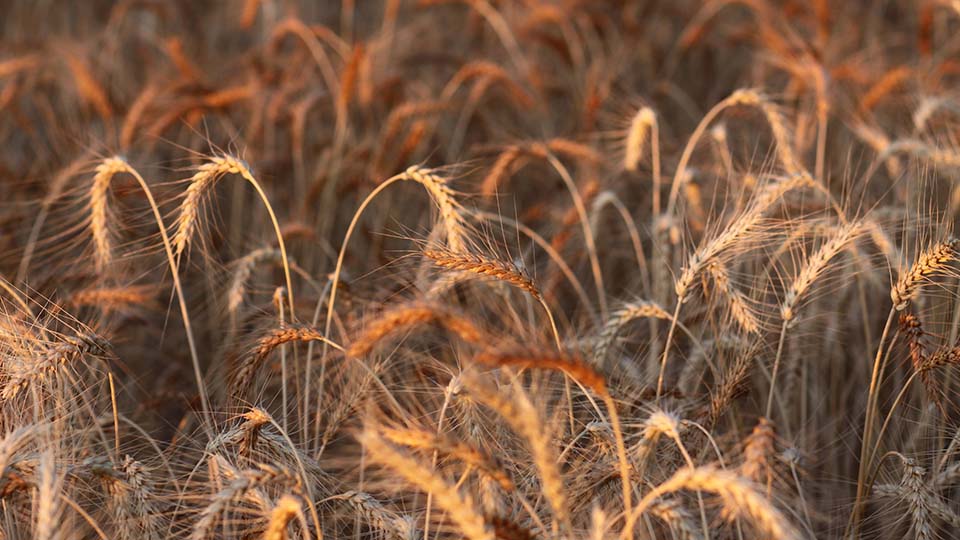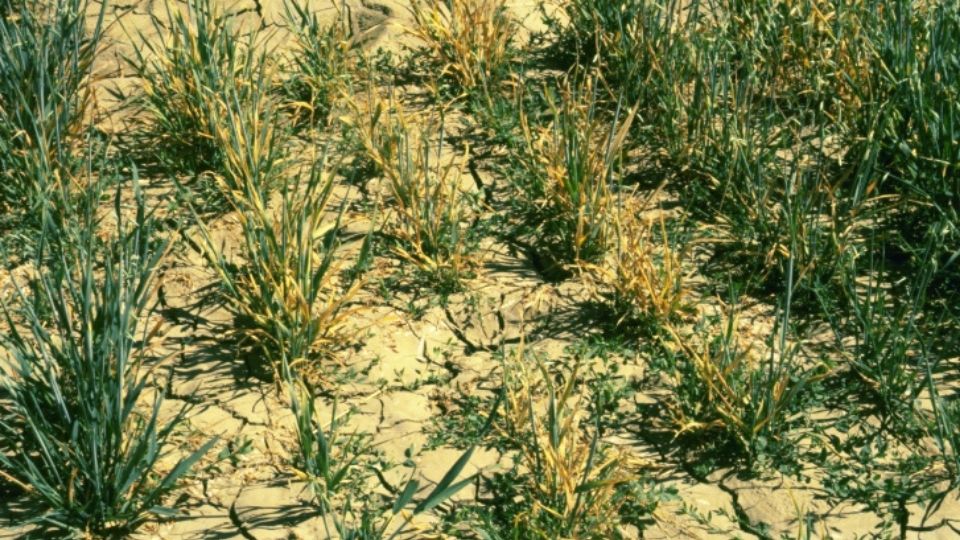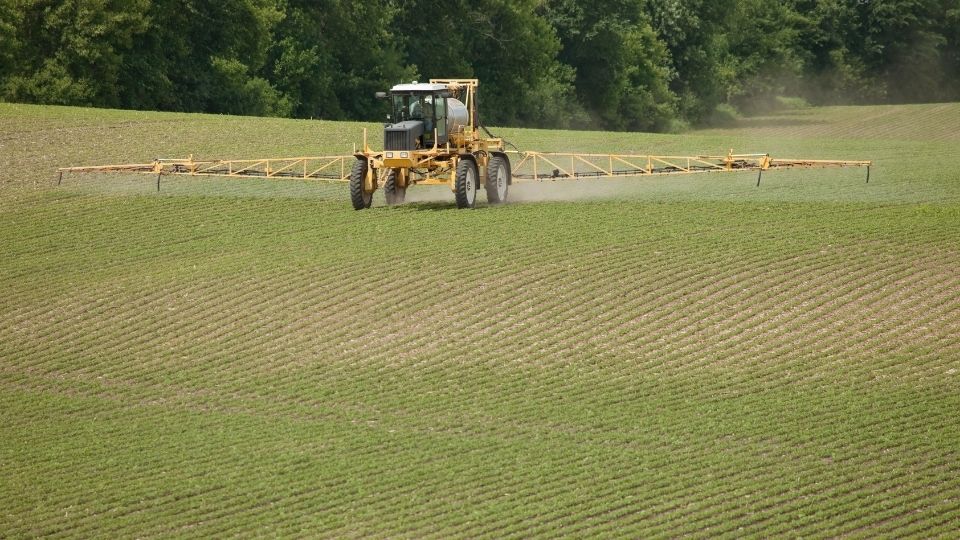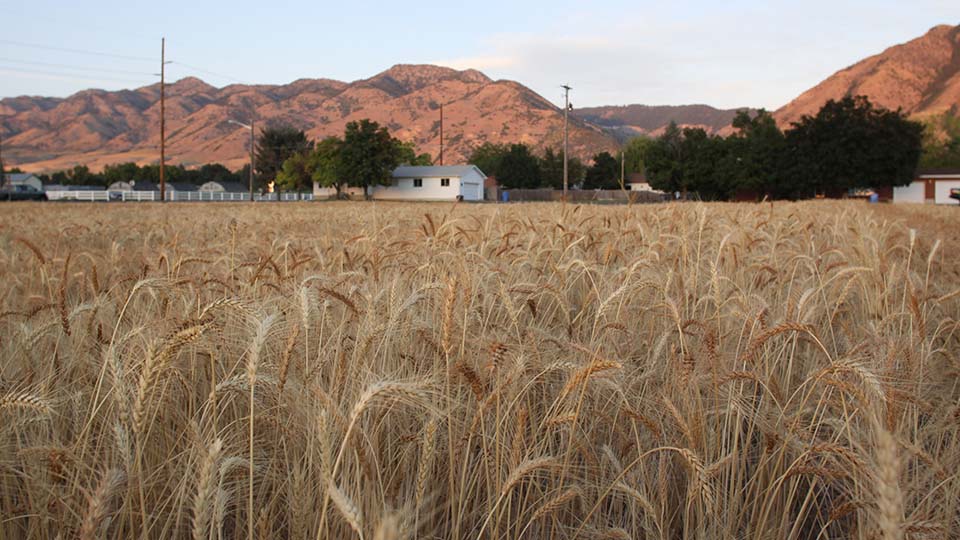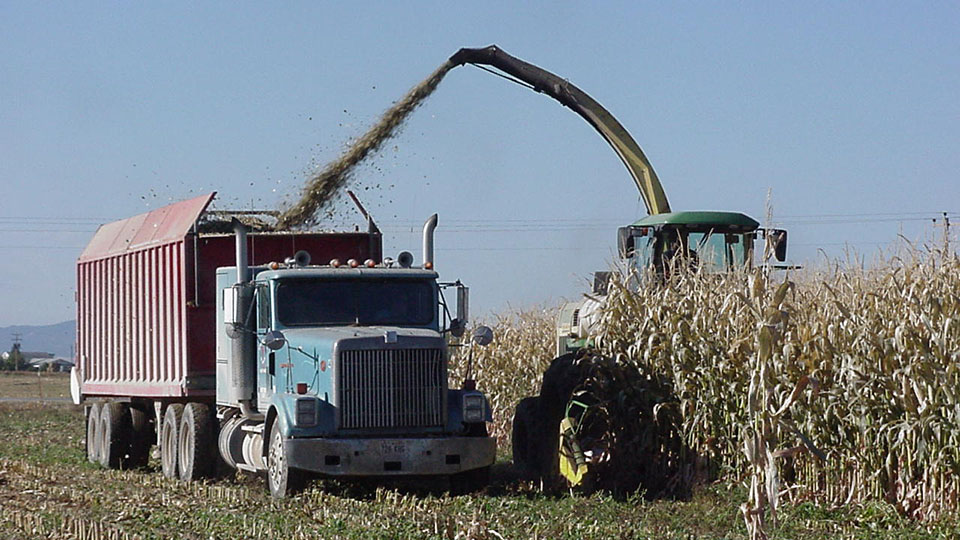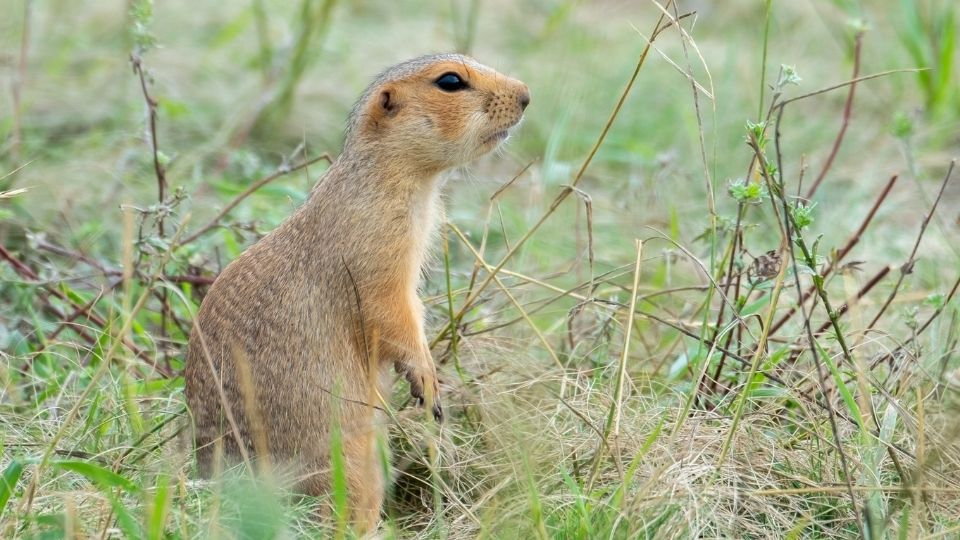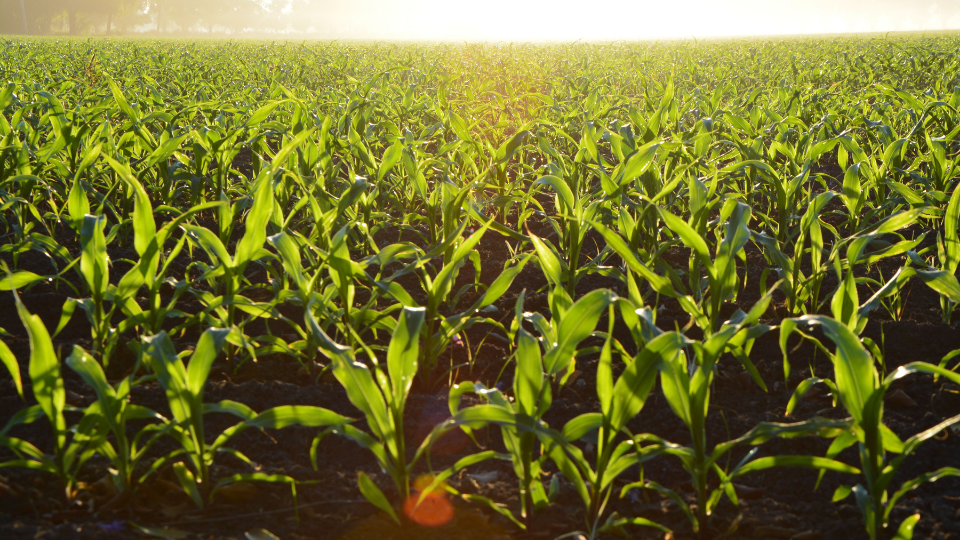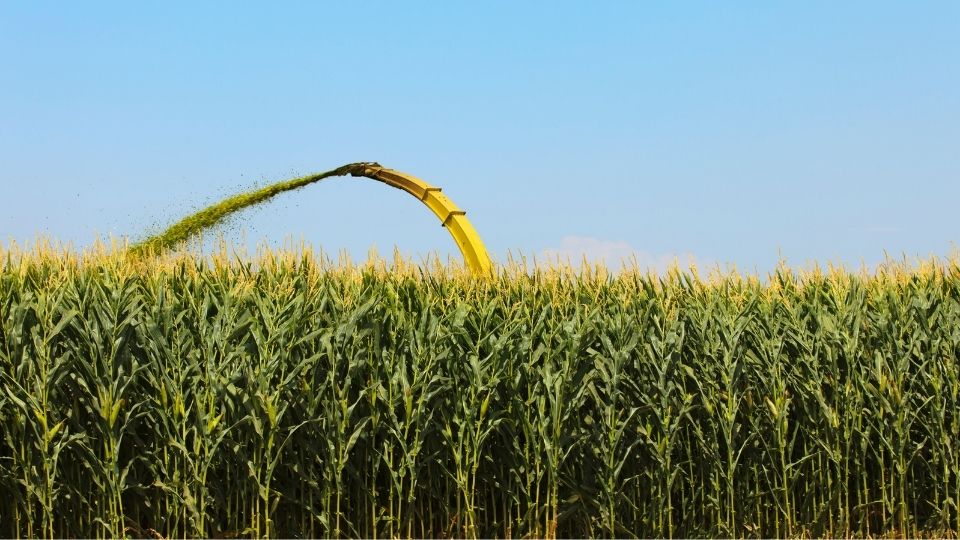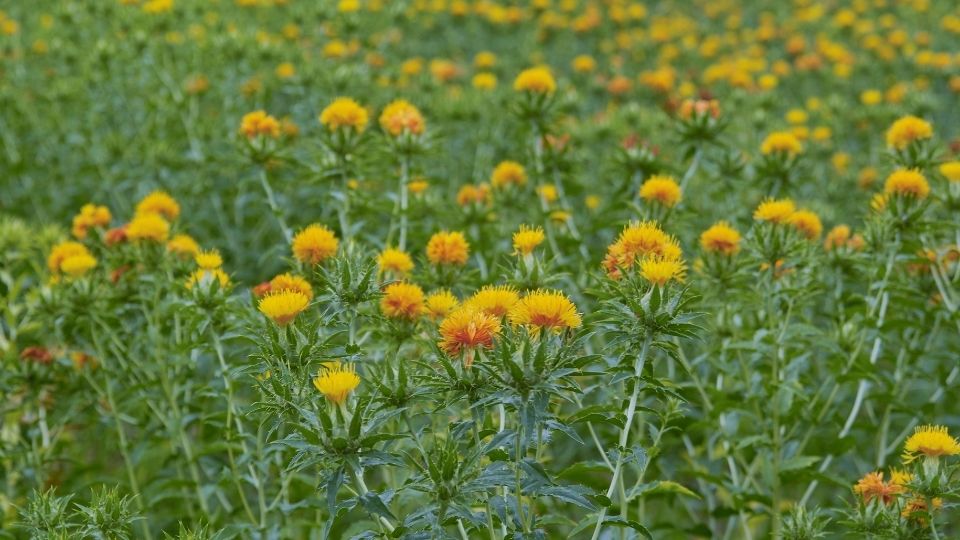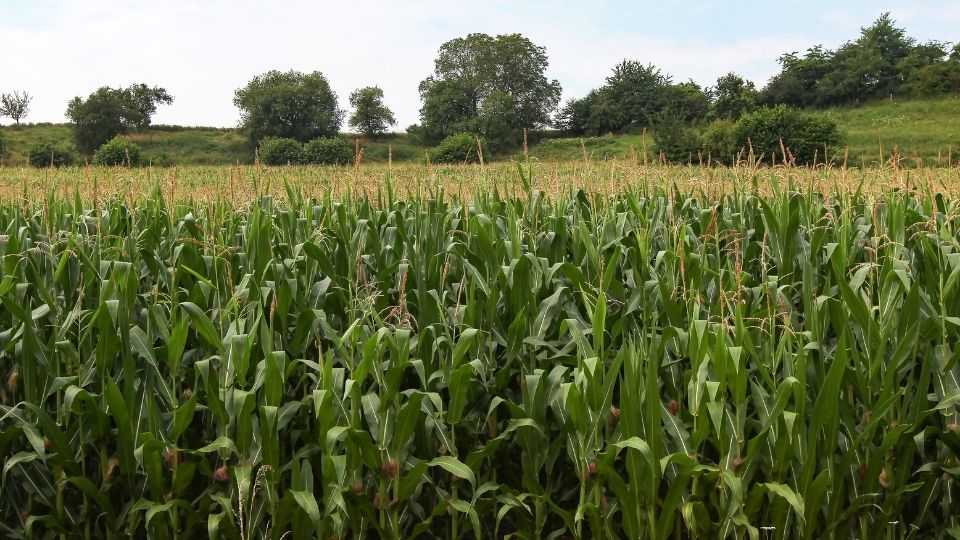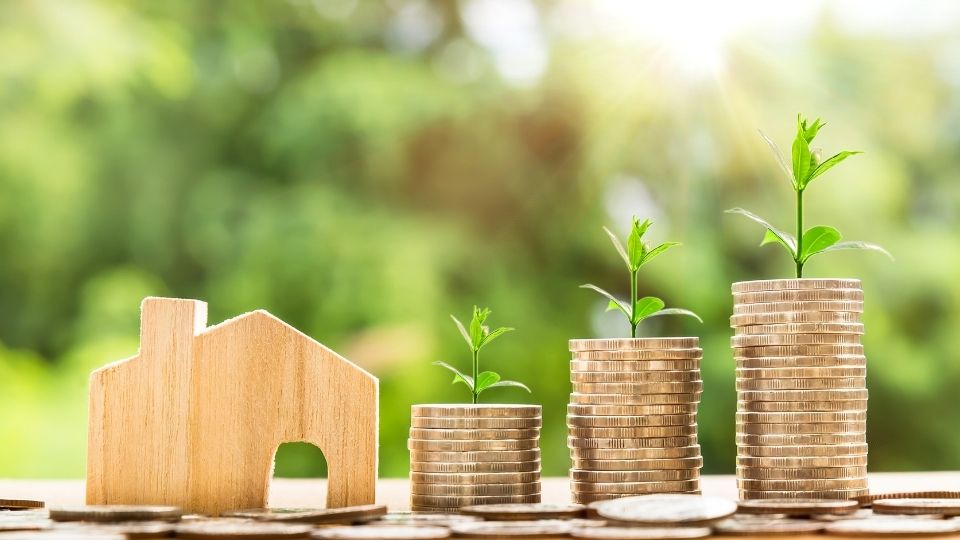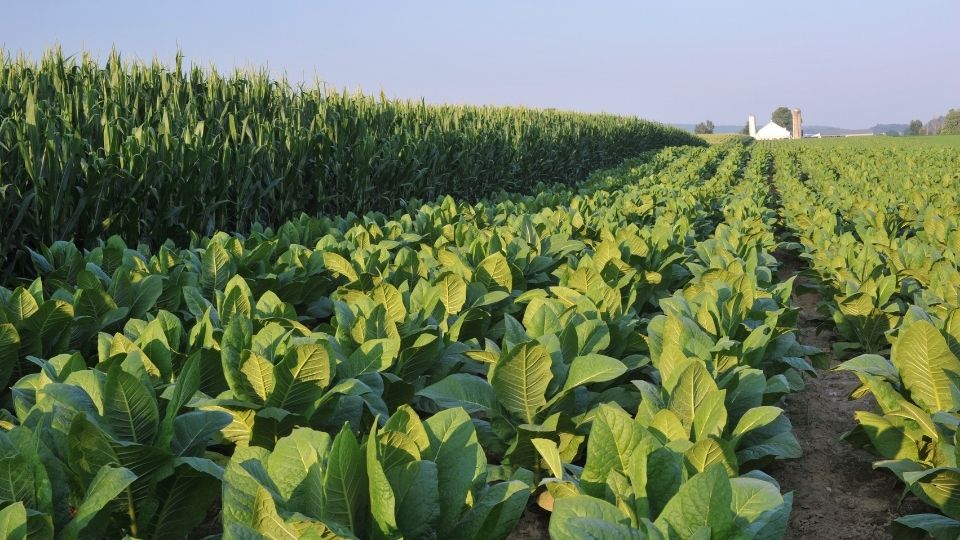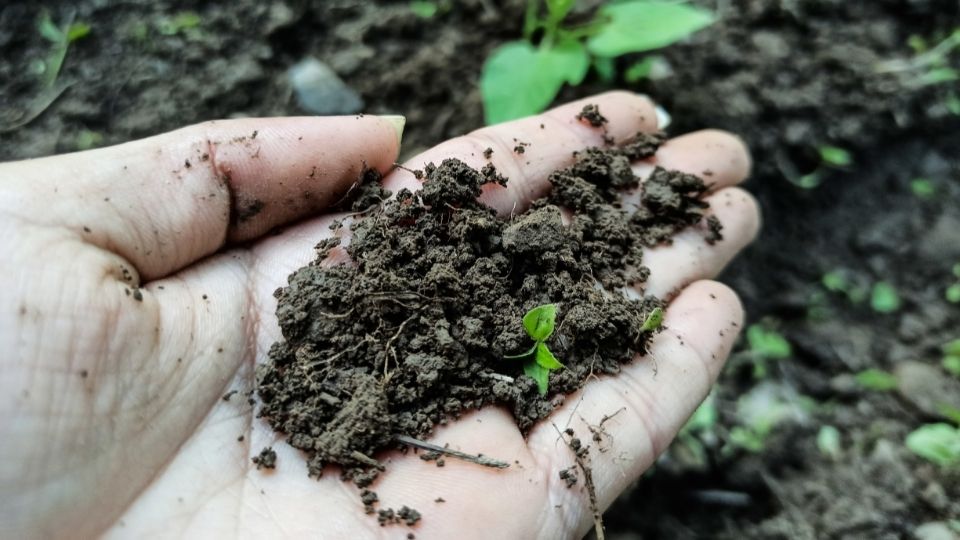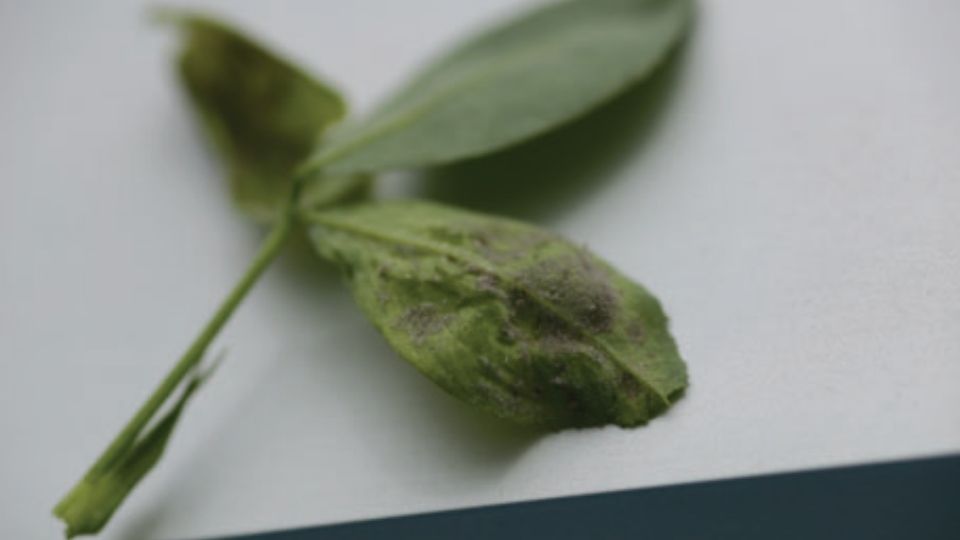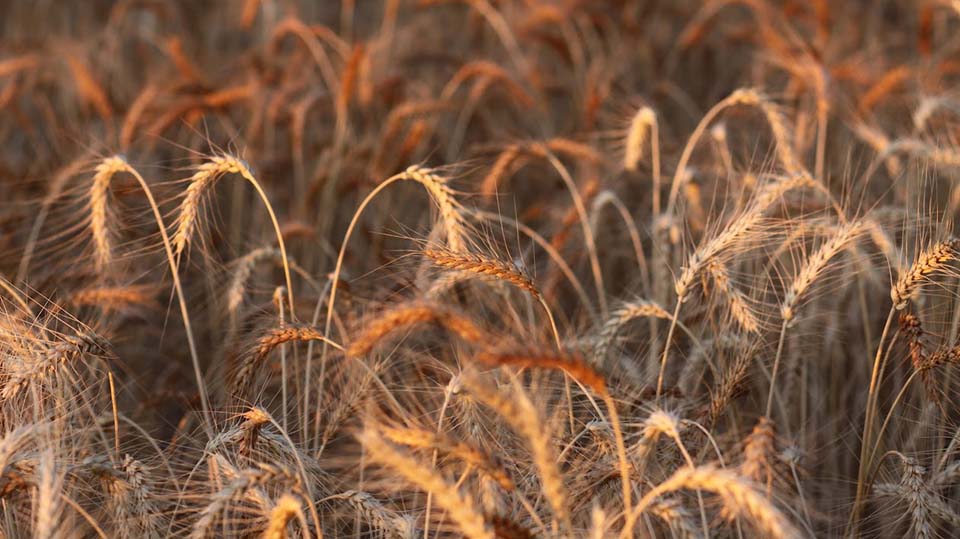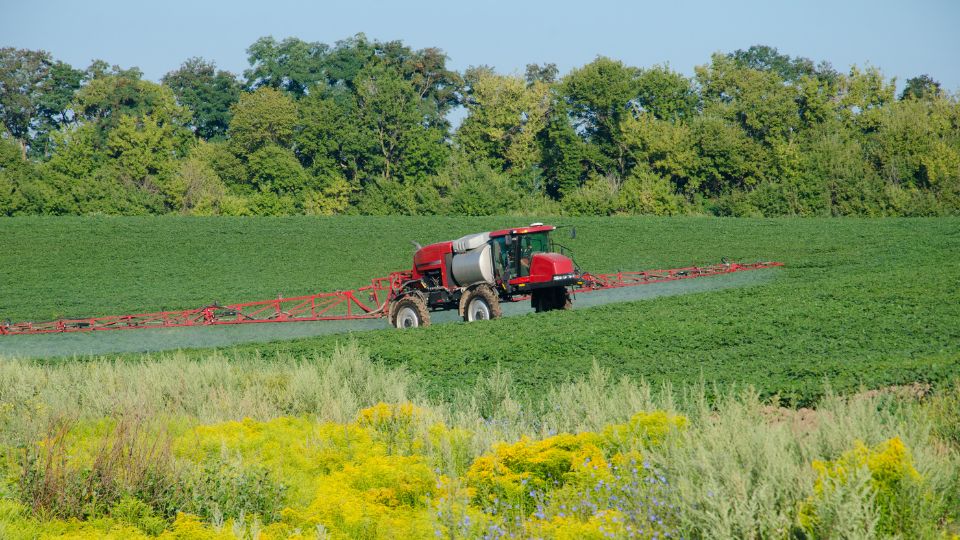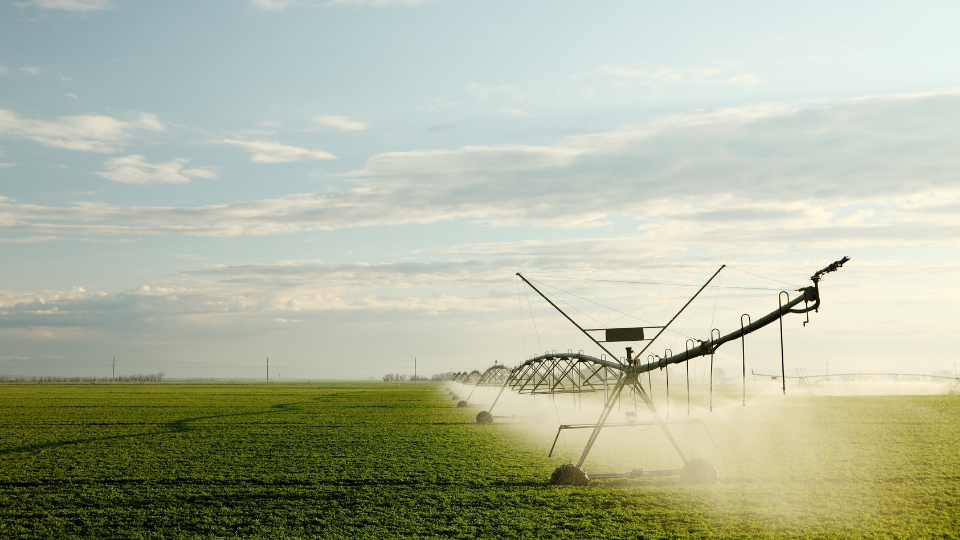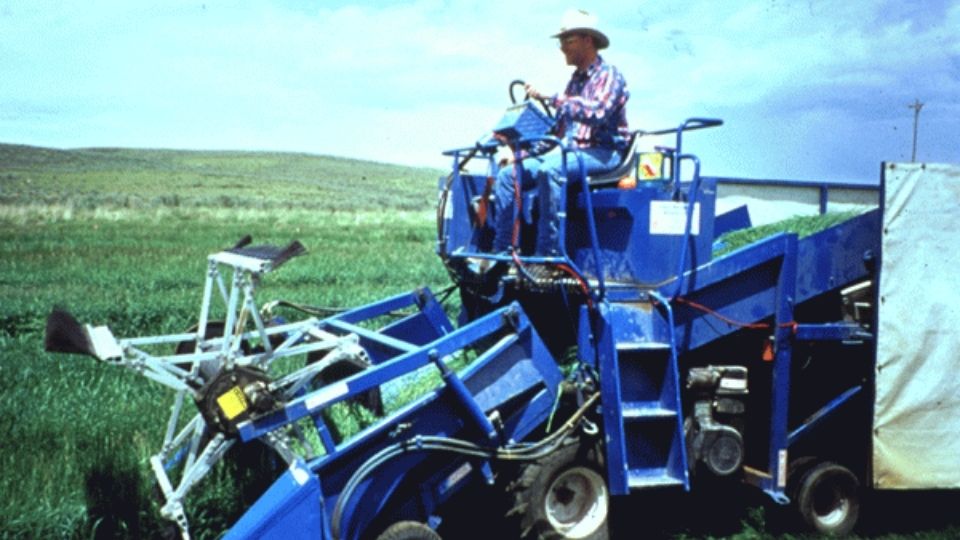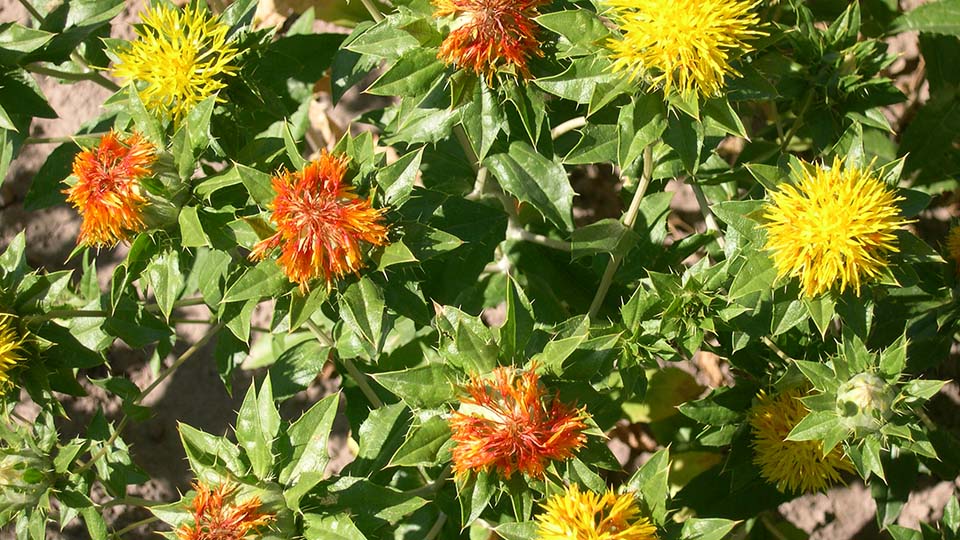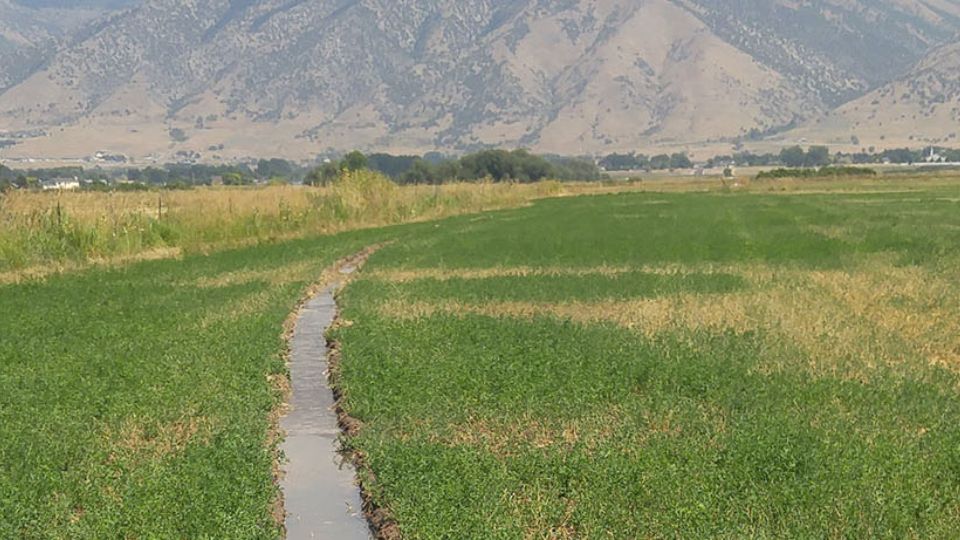The Potential for Reducing N Fertilizer Inputs for Corn
Production in the First Year Following Alfalfa
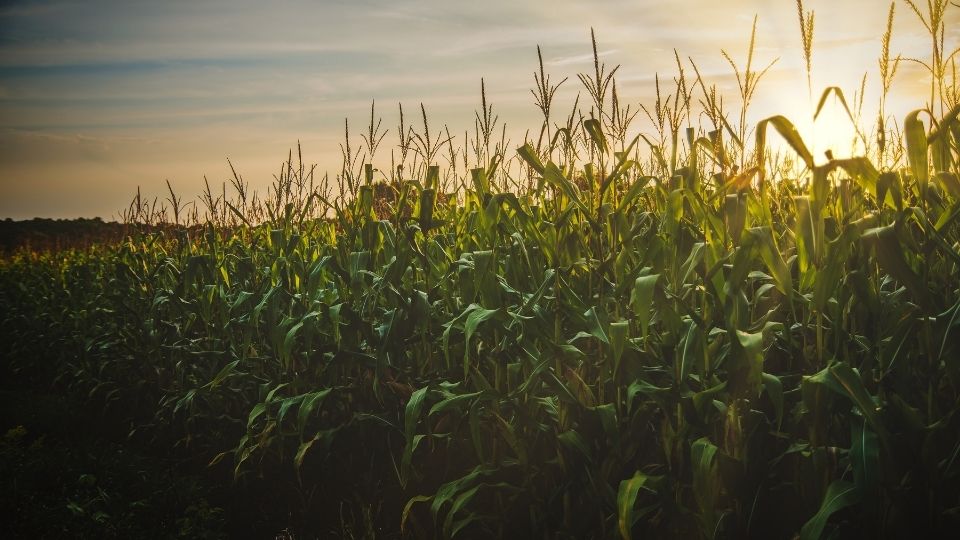
Introduction
Crop rotation is an important practice in the production of field and forage crops, with well-known benefits of improving the soil (moisture, structure, fertility, and organic matter), minimizing pests and diseases, and providing economic diversification. Corn acreage in the West is on the rise due to the growth of the dairy industry and increased emphasis on corn in dairy and beef rations. In Utah, corn is grown on approximately 84,000 acres, trailing only alfalfa (580,000 acres) in irrigated acreage planted (USDA NASS 2011). On irrigated farmland in Utah, the typical crop rotation consists of alfalfa for 4-6 years, followed by 1-2 years of corn or a small grain, then back to alfalfa.
Corn has the potential for high economic return but is limited by high production costs. Over the past 2 years, corn prices received by farmers have dropped 46 percent (from $7.04/bushel in Feb 2013 to $3.79/bu in Feb 2015) (USDA-NASS 2015). At the same time, production costs such as seed, fertilizer, pesticides, irrigation, equipment, labor, and land continue to rise. To maintain profitability, growers are faced with the need to optimize crop inputs to ameliorate the effects of potentially volatile crop prices.
Nitrogen (N) is critical to the proper growth and development of corn and generally has a greater impact on corn yield than any other nutrient. Some of the N needs of corn are met by the breakdown of organic matter and previous crop residues in the soil, but the balance comes from N fertilizer application. According to the crop budget recently published by Holmgren et al. (2015), N fertilizer represents the highest cost input in Utah corn production. Most Utah growers target an N rate of approximately 200-250 units per acre, which would equate to $152-$190 per acre at $0.76 per unit. When growing corn after alfalfa, Utah growers often allow for an N credit of 50 units per acre to reduce the amount of N applied.
The objectives of this project were to 1) examine current post-alfalfa N fertilizer credit guidelines and investigate the potential to further reduce N fertilizer rates (if possible) on first year corn after alfalfa across Utah, and 2) accordingly update the USU Extension corn management recommendations and promote grower awareness and adoption of the new guidelines.
Study Details
Studies were conducted over three (2012-2014) crop seasons at eight different farms in six Utah counties. Sites were located in Cache County in 2012 and 2013 at two sites, and in 2014 at one site. In 2014, extensive study across the state was done at five additional sites, one each in Beaver, Box Elder, Sevier, Uintah, and Weber counties. Fields in which the experiments were located were all in alfalfa production in the year prior to the study and planted to corn in the spring of each study year.
Small plot experiments were located in an area of each study field that had no additional N applied through manure or other fertilizer sources by the farmer in the previous year. Apart from the fertilizer application treatments and data collection detailed below, the farmers at each site conducted all field operations.
Four rates of N fertilizer (0, 50, 100, and 200 lbs N/acre) were applied broadcast as ammonium nitrate (NH4NO3) to plots measuring four rows (10 feet) wide by 40 feet long. Treatments were arranged in a randomized complete block design and replicated four times.
Soil cores were taken at planting to a depth of 3 feet and split into 1 foot increments. Soil analysis was completed by the USU Analytical Laboratory to determine texture, pH, salinity, phosphorous, potassium, and nitrate-N. Final stand counts were determined in each plot at the V8 stage of corn growth. Harvest in the fall was undertaken when the corn reached 60-70% moisture. Stalks were cut and weighed from 3 m of the center two rows of each plot. Five stalks from each plot were passed through a wood-chipper and a 1 kg sample collected for forage quality analysis. Dry matter yields were determined from moisture sub-samples taken from these chipped stalk samples.
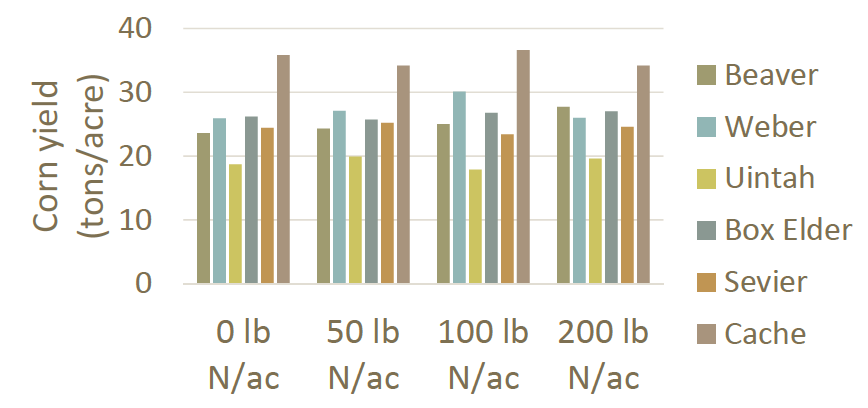
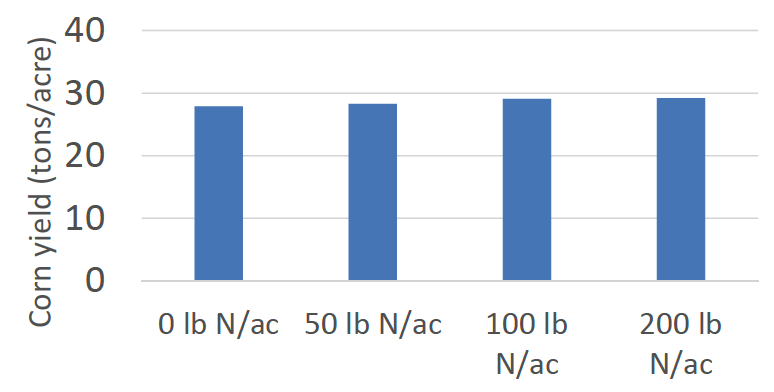
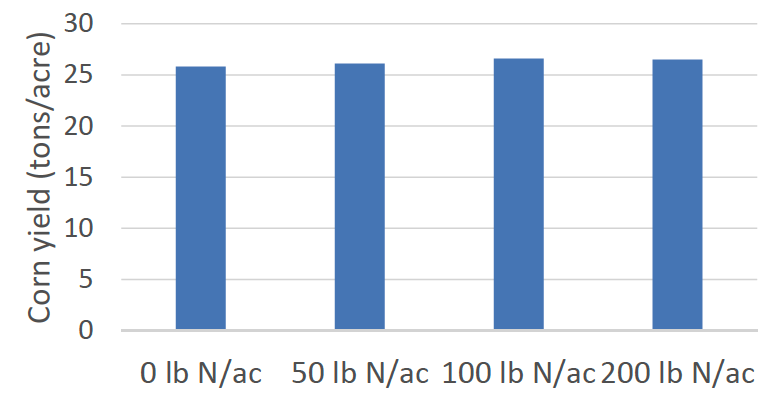
Results and Conclusions
While there is a fair amount of variability between sites at different location around the state (see Figure 1) there was no statistical difference in yield at any of the sites over the rates of N application studied (Figures 2 and 3). This strongly suggests that Utah growers are able to reduce N fertilizer application much more than the traditional 50 unit per acre credit, or perhaps even eliminate it all together. If half of Utah corn is grown on acreage in its first year after alfalfa, this change in management practice, alone, could result in a cost savings of $6.3 million (42,000 acres x 200 unit N/acre x $0.76 unit) to Utah farmers annually.
Additional study is being undertaken to test the potential for reducing N inputs in the second year after alfalfa. Common practice is to rotate out of alfalfa for two seasons to break disease and pest cycles in each rotational crop. It is possible that further savings to the grower can be realized by reducing or eliminating the need to fertilize in the second rotational crop year.
Acknowledgments
The success of this work is largely the result of excellent cooperation between local county agricultural agents (noted as co-authors) and the many cooperating growers that opened their minds and fields to this undertaking. Funding for these projects was primarily through USU Cooperative Extension and the Utah Agricultural Experiment Station.
Further Reading
- Cox, W.J., S. Kalonge, D.J.R. Cherney, and W.S. Reid. 1993. Growth, yield, and quality of forage maize under different nitrogen management practices. Agron. J. 85:341-347.
- Clark, J.D. 2014. Yield and quality of first-year silage corn following alfalfa stand termination as affected by tillage, herbicide, and nitrogen fertilizer. USU Master’s Thesis. 103 p.
- Holmgren, L., and M. Pace. 2015. Costs and Returns for Irrigated Roundup Ready Silage Corn, Box Elder County. USU Extension Publication. Available online: https://extension.usu.edu/newsletters/files/uploads/2 015_Budgets/Silage_Corn_15edit3-10.pdf
- Lawrence, J.R., Q.M. Ketterings, and J.H. Cherney. 2008. Effect of nitrogen application on yield and quality of silage corn after forage legume-grass. Agron. J. 100:73–79.
- Sheaffer, C.C., J.L. Halgerson, and H.G. Jung. 2006. Hybrid and N fertilization affect corn silage yield and quality. J. Agronomy & Crop Science 192:278- 283.
- Stanger, T.F., and J.G. Lauer. 2008. Corn grain yield response to crop rotation and nitrogen over 35 years. Agron. J. 100:643-650.
- USDA-NASS. 2014. Prices received for corn by month – United States. Available online: http://www.nass.usda.gov/Charts_and_Maps/Agricul tural_Prices/pricecn.asp
- Yost, M.A., J.A. Coulter, M.P. Russelle, C.C. Sheaffer, and D.E. Kaiser. 2012. Alfalfa nitrogen credit to first-year corn: Potassium, regrowth, and tillage timing effects. Agron. J. 104: 953-962.
- Yost, M.A., J.A. Coulter, and M.P. Russelle. 2013. Firstyear corn after alfalfa showed no response to fertilizer nitrogen under no-tillage. Agron. J. 105:208-214.
Published August 2015
Utah State University Extension
Peer-reviewed fact sheet
Authors
Earl Creech, Extension Agronomist, PSC, USU; Grant Cardon, Extension Soils Specialist, PSC, USU; James Barnhill, Agriculture Agent, Weber County; Jody Gale, Agriculture Agent, Sevier County; Clark Israelsen, Agriculture Agent, Cache County; Boyd Kitchen, Agriculture Agent, Uintah County; Mark Nelson, Agriculture Agent, Beaver County; Mike Pace, Agriculture Agent, Box Elder County
Related Research











